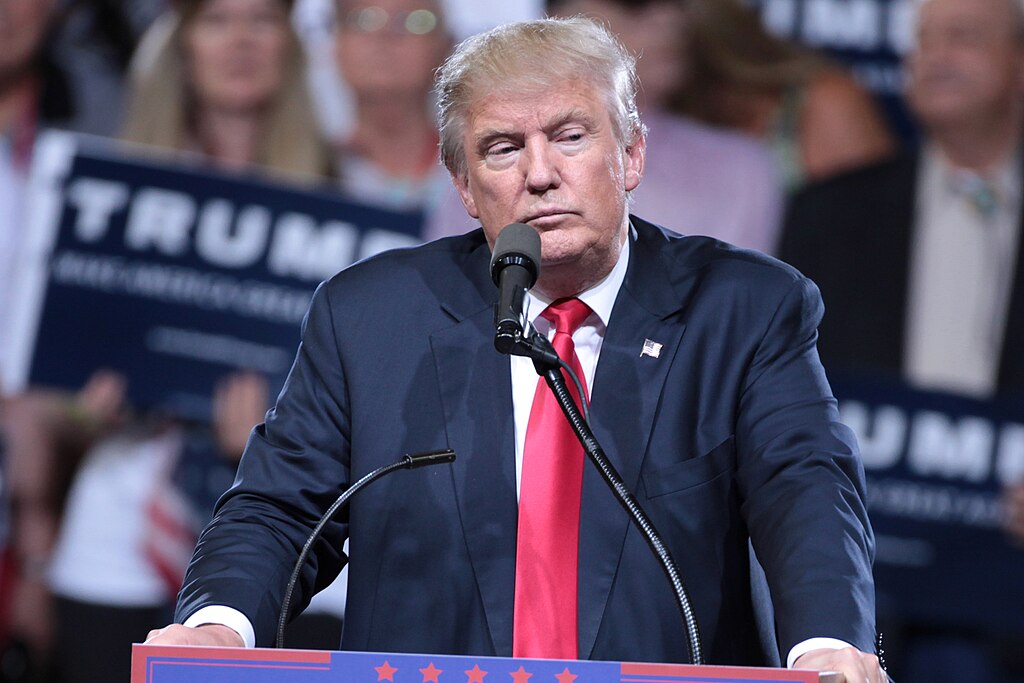The “Trump trade” is back in focus following the dramatic market reactions to Donald Trump’s return to the White House. With equities soaring, Treasury yields climbing, and the U.S. dollar strengthening, Bank of America (BofA) strategists have outlined the economic forces driving these trends, forecasting major shifts across sectors.
In a recent note, BofA’s U.S. economics team dissected what they called three pivotal lessons from the market's reaction, highlighting the far-reaching implications of Trump’s policies on inflation, interest rates, and sector-specific performance.
Tariffs Drive Inflationary Expectations
The first key takeaway from BofA’s analysis centers on tariffs. Markets are anticipating significant tariff hikes, which have already begun influencing inflation expectations. According to BofA, this is particularly visible in the rise of short-term breakeven inflation, which measures the market’s forecast for inflation over a fixed period.
“Markets are pricing in higher tariffs and their immediate inflationary impact,” strategists noted. The resulting inflationary pressures have been more pronounced at the short end of the yield curve, with investors bracing for a costlier import environment.
This tariff-driven inflation could have broader implications, especially for industries reliant on foreign goods or labor. Construction and restaurant sectors, both highly dependent on imports and immigrant workers, may face increased operational costs, squeezing profit margins.
Structural Shift Toward Higher Rates
The second insight focuses on a structural shift toward higher policy rates. With Trump’s fiscal plans expected to include increased government spending, the outlook for Treasury issuance and the federal deficit has changed. BofA predicts that the Federal Reserve may raise policy rates to counterbalance what it describes as “a chronically easy fiscal stance.”
These developments have already impacted the long end of the yield curve, with nominal and real yields climbing in anticipation of a ballooning deficit. As borrowing costs rise, businesses across various sectors could feel the pinch, potentially slowing investments in growth.
Deregulation Fuels Sector-Specific Gains
The third key factor in the Trump trade is deregulation. Financial and energy stocks have emerged as the biggest beneficiaries of investor optimism surrounding potential regulatory rollbacks. Financials, in particular, led the charge, with BofA labeling the sector as “the biggest winner of the day.”
The energy sector has also seen significant gains, buoyed by expectations of more lenient regulations. Investors are betting that Trump’s deregulatory agenda could act as a tailwind, boosting profitability in these industries.
Mixed Outcomes for Other Sectors
While some sectors stand to gain, others could face challenges. Small-cap companies, for instance, are likely to encounter headwinds from higher tariffs and labor cost inflation. On the flip side, M&A opportunities in healthcare, IT, and smaller banks could provide a much-needed boost to these sectors.
For industries like construction and hospitality, tighter immigration policies and rising tariffs could result in higher operational costs, testing the resilience of labor-intensive businesses.
The Future of Trump Trade
BofA’s analysis underscores the complexities of the Trump trade. While some sectors may benefit from deregulation and fiscal spending, others face significant risks tied to tariffs and inflation. Investors should brace for heightened volatility and adopt sector-specific strategies as markets adjust to the new policy environment.



 U.S. Expected to Expand Travel Ban to More Than 30 Countries
U.S. Expected to Expand Travel Ban to More Than 30 Countries  Wikipedia Pushes for AI Licensing Deals as Jimmy Wales Calls for Fair Compensation
Wikipedia Pushes for AI Licensing Deals as Jimmy Wales Calls for Fair Compensation  Australia Moves Forward With Teen Social Media Ban as Platforms Begin Lockouts
Australia Moves Forward With Teen Social Media Ban as Platforms Begin Lockouts  Asian Currencies Steady as Markets Await Fed Rate Decision; Indian Rupee Hits New Record Low
Asian Currencies Steady as Markets Await Fed Rate Decision; Indian Rupee Hits New Record Low  Asia’s IPO Market Set for Strong Growth as China and India Drive Investor Diversification
Asia’s IPO Market Set for Strong Growth as China and India Drive Investor Diversification  Cuba Reaffirms Anti-Drug Cooperation as Tensions Rise in the Caribbean
Cuba Reaffirms Anti-Drug Cooperation as Tensions Rise in the Caribbean  UN Chief Says Gaza Operation “Fundamentally Wrong” as Concerns Over War Crimes Grow
UN Chief Says Gaza Operation “Fundamentally Wrong” as Concerns Over War Crimes Grow  Tesla Expands Affordable Model 3 Lineup in Europe to Boost EV Demand
Tesla Expands Affordable Model 3 Lineup in Europe to Boost EV Demand  Australia Progresses AUKUS Review as U.S. Affirms Strong Support
Australia Progresses AUKUS Review as U.S. Affirms Strong Support  Amazon Italy Pays €180M in Compensation as Delivery Staff Probe Ends
Amazon Italy Pays €180M in Compensation as Delivery Staff Probe Ends  China Urged to Prioritize Economy Over Territorial Ambitions, Says Taiwan’s President Lai
China Urged to Prioritize Economy Over Territorial Ambitions, Says Taiwan’s President Lai  IKEA Launches First New Zealand Store, Marking Expansion Into Its 64th Global Market
IKEA Launches First New Zealand Store, Marking Expansion Into Its 64th Global Market  Trump’s Name Appears on U.S. Institute of Peace Ahead of Rwanda–Congo Deal Signing
Trump’s Name Appears on U.S. Institute of Peace Ahead of Rwanda–Congo Deal Signing  U.S. Justice Department Orders Intensified Probe Into Antifa and Domestic Extremist Groups
U.S. Justice Department Orders Intensified Probe Into Antifa and Domestic Extremist Groups  Taiwan Signals Openness to Renew Ties with Honduras as Election Unfolds
Taiwan Signals Openness to Renew Ties with Honduras as Election Unfolds  Japan’s Nikkei Drops as Markets Await Key U.S. Inflation Data
Japan’s Nikkei Drops as Markets Await Key U.S. Inflation Data  Spain’s Industrial Output Records Steady Growth in October Amid Revised September Figures
Spain’s Industrial Output Records Steady Growth in October Amid Revised September Figures 






























